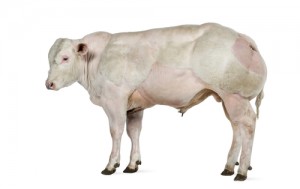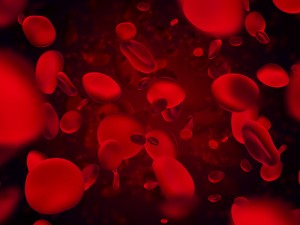Resistant Starch, part 2 of 3 – Where can I find it?
What foods have resistant starch? There are 4 types of RS (resistant starch). Unlike most other ingredients, resistant starches are ...

What foods have resistant starch? There are 4 types of RS (resistant starch). Unlike most other ingredients, resistant starches are ...
There are essential fatty acids, and there are essential amino acids, but there are no essential carbohydrates – our body ...
What if I told you that most exercise does not cause long term weight loss? This is a secret the ...
For many of us, carbohydrates seem to be the most important and most debated macronutrient when speaking on building muscle. ...
This inexpensive amino brings with it increased testosterone production & recovery making it a valuable adtiion to your supplement stack. ...
Fat loss is the ever-elusive conquest of anyone and everyone who is into health and fitness. Observationally I also think ...
Question: “Is there an optimal amount of Time Under Tension (TUT) to shoot for each set?” When trying to maximize ...
Are the results of your bench pressing, sore shoulders & a flat chest? Time to do things right. Here Ben ...
Mention the term ‘steroid hormone’ to most beginner bodybuilders and they may assume you are talking about the most coveted ...
With an overwhelming amount of research demonstrating its benefits, ‘resistant starch’ blows away many of the sexier sounding supplements that ...
We’ve all been there. You’re in the gym busting your ass everyday, your diet is on point and you’re making ...
The first thing to discuss here is what it really is to lose 10lbs of pure fat. Most people lose ...
We’ve all been there. You’re in the gym busting your ass everyday, your diet is on point and you’re making some solid gains. But then there’s THAT guy. He doesn’t train as hard as you, his diet may not be quite as dialled in as yours, and yet he still seems to be building muscle faster than you are. Assuming that he’s natural, the reason for these differences boils down to one thing: genetics.
Genetics has become something of a 4 letter word in fitness, with people loosely using the term to justify sloppy training methodologies or dietary practices. “I just can’t seem to put on any size, it must be down to my genetics” is a common phrase you’ll hear from any novice gym rat. But this is probably not the case, it’s because your training is poor and your diet is worse.
That’s not to say that genetics has no bearing on how effective your training will be, or a direct influence on how easily you build muscle. Over the past few years, scientific research has identified one key gene in the regulation of muscle mass: myostatin(1)(2).
Myostatin is a member of the TGF-beta family of growth factors, which directly acts in regulating muscle mass. There are a number of different myostatin subtypes, each of which impact not only how much muscle mass you carry, but the fibre composition of that muscle as well(3)! The reason THAT guy in the gym builds muscle faster than you? Maybe he’s “lucky” enough to express a different version of the myostatin gene. Myostatin isn’t only expressed in humans, with a number of other mammals also expressing the gene. Cattle, specifically the Belgian Blue, are worth mentioning. Through years of selective breeding, these cattle have been bred to be myostatin null, and as a result display a characteristic “double muscling”(4). As such, Belgian Blues’ are often nicknamed “Schwarzenegger cattle”.
 It has been theorised that some top-level bodybuilders and fitness competitors also express a mutation in the myostatin gene. Flex Wheeler claimed to express a rare form of the gene, however
It has been theorised that some top-level bodybuilders and fitness competitors also express a mutation in the myostatin gene. Flex Wheeler claimed to express a rare form of the gene, however
this was never confirmed through legitimate impartial 3rd party lab testing. There has only been one recorded case of a human not expressing the myostatin gene(5). The child in question, born of 2 international athletes with a family history of abnormal strength, was able to isometrically hold a 3 kg dumbbell in each hand in the lateral raise position. At 4 years of age. I think we can all agree that that is strong. The child also displayed significantly lower body fat, and significantly increased muscle density. Sounds like the holy grail of bodybuilding doesn’t it? Well it may be, however myostatin is also expressed in the heart, so any mutations in the gene could have serious health consequences.
Now I know what you’re thinking (I was thinking exactly the same thing when I first heard about this): “if only there was som
e way I could change my genes…”
Epigenetics
I have some good and bad news for you; there is no way to change your genes. By definition, it’s quite literally in your DNA. You can thank your parents for that. The good news is, although you can’t change your genetic makeup, you can alter the expression of some genes! Your genes interact with their physiological environment, which in turn interacts with the physical environment. The whole nature vs. nurture debate goes right down to the genetic level. The study of this interaction between you, your genes and the environment is epigenetics, a relatively new and exciting area of genetic research(6)! A good practical example of epigenetics in action is altitude training.
At sea level, your body is ticking along nicely, you’re maintaining homeostasis, and you’re haemoglobin is 96-99% saturated(7) (haemoglobin carries the oxygen in your blood, it’s why b
lood is red). But when you go to altitude, this can fall to 92% (anyone reading this in Denver, CO, that’s probably what your blood is at, that reading was taken at one mile high). Your body detects this fall in blood oxygen, and up-regulates expression of certain genes, and subsequently hormones (specifically erythropoietin, or EPO. One of Lance Armstrongs’ favourites.) to counter this drop. You produce more red blood cells, carrying more haemoglobin, which allows blood oxygen levels to rise back into the normal range. Then, when you return to sea level, this increased expression is down-regulated as your body detects blood haemoglobin levels are unnecessarily high. Epigenetics in action!
is at, that reading was taken at one mile high). Your body detects this fall in blood oxygen, and up-regulates expression of certain genes, and subsequently hormones (specifically erythropoietin, or EPO. One of Lance Armstrongs’ favourites.) to counter this drop. You produce more red blood cells, carrying more haemoglobin, which allows blood oxygen levels to rise back into the normal range. Then, when you return to sea level, this increased expression is down-regulated as your body detects blood haemoglobin levels are unnecessarily high. Epigenetics in action!
So what does all this have to do with myostatin? Well, strength training has been shown to reduce expression of myostatin(8). Thinking about it that makes sense doesn’t it? I mean, you train hard, and you get bigger right? One of the many factors involved in the growth of a muscle is localised myostatin expression. So the more you train that muscle, and the harder you train that muscle, the lower the overall expression of myostatin in that specific muscle. I say specific, because myostatin gene expression is localised(9). So if training can reduce myostatin expression, how can you maximise this reduction? How can you optimise your own body’s response to training, and optimise your gains?
Optimise
Over the past decade, research has identified the mTor signalling pathway as one of, if not the primary controllers of muscle hypertrophy(10). The key to building slabs of muscle is maximal activ
ation of the mTor pathway(11). The trouble is myostatin is one of the many growth factors which contribute to the regulation and control of the pathway as a whole, and acts through the blocking of genes induced during differentiation(12) (differentiation is the process by which muscle stem cells transform into the various component proteins of muscle tissue). Myostatin directly inhibits one of the major pathways involved in myogenesis, and subsequently hypertrophy, with concentrations peaking immediately post exercise. Not what you want to hear when trying to build some serious muscle!
So it stands to reason that if you’re looking to build muscle, you’ll want to do everything you can to achieve 2 things:
This is where things get really interesting.
Maximal activation of mTor
A muscle doesn’t know how much weight is being lifted. A muscle only knows the tension it experiences when lifting that weight. As such, tension can be split into 2 parts:
Load and tension are directly related, with tension increasing proportionately to load. So you could be forgiven for thinking that maximum tension is achieved through lifting the heaviest weight possible. While this will produce some results, they will be far from optimal. Activation of mTor actually begins to decrease beyond 60 seconds of tension, so high reps with light weight is also counterproductive (however it may give you a sweet pump, which could also contribute to your gains, but that’s another story and another mechanism entirely). What you are looking to achieve is maximal tension, and subsequently maximum TUT, for less than 1 minute. This is achieved through proper execution of the desired exercise, so really dial in your form. No body-English please. A bicep curl should be a curl of the bicep, not a display of how hard you can thrust your hips.
Circulating concentrations of IGF-1 have been shown to increase dramatically following a bout of strength training(14), which is fantastic news for inhibiting the action of myostatin. The signalling mechanism involved in mTor which is inhibited by myostatin is ACTIVATED by IGF-1. The action of myostatin is negated by IGF-1! The greater the degree of exertion, the more IGF-1 is released, and therefore the greater the inhibition of myostatin, and greater the activation of mTor. And more mTor means more gains!
Inhibiting myostatin
So we’ve covered how you can maximally activate mTor to achieve maximum gains through this pathway (mTor is not the only pathway or factor involved in muscle building, sadly/thankfully the body isn’t that simple), and we’ve discussed how myostatin is inhibited as a result of tension. But what if you could bypass the hard work (not that you’d want to), and inhibit myostatin directly. Sounds too good to be true doesn’t it? Imagine being able to take one of the biggest inhibitors of hypertrophy at least partially out of the equation. If only such a substance existed.
Well it does, and you may be surprised what it is.
Creatine monohydrate.
Some exciting research has shown that creatine may go some way to increasing muscle mass through inhibition of the action of myostatin(15). The participants in this study who were given creatine in conjunction with a resistance program displayed significantly lower myostatin expression than the placebo group! Good news for creatine, the science is slowly catching up with and lending credence to what the bodybuilding community has believed for some time. It should be noted however, that research in this area is limited, so it may be better to draw your own conclusions. Bioavailability plays a large role in how much of a supplement is utilised effectively by the body, and creatine monohydrate is limited in this respect relative to other forms. Creatine Ethyl Ester has been shown to have greater bioavailability due to higher membrane permeability , achieving higher intracellular concentrations(16). So you can see that other forms of creatine may be even more effective at inhibiting myostatin! We just need to wait for the science to catch up!
Take home
So there we have it. You now know why THAT guy seems to have everything so easy, but you also know how to work around the way your body behaves. The pursuit of muscle is never easy, each lb of gain has to be fought for and earned. The good news is that you now have some new weapons to add to your arsenal. Keep the tension high, control the movements and supplement effectively. Optimise your own genetics, and maximise your gains!
References